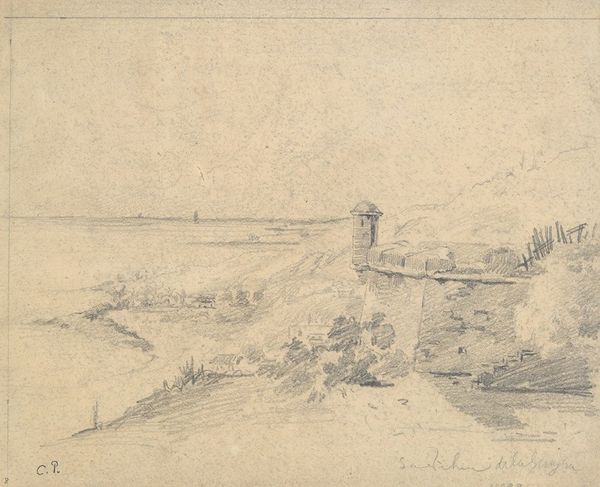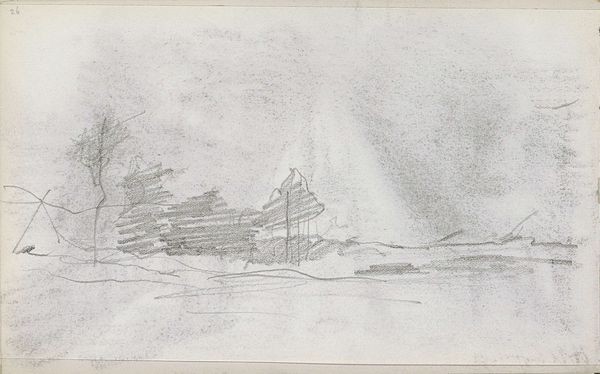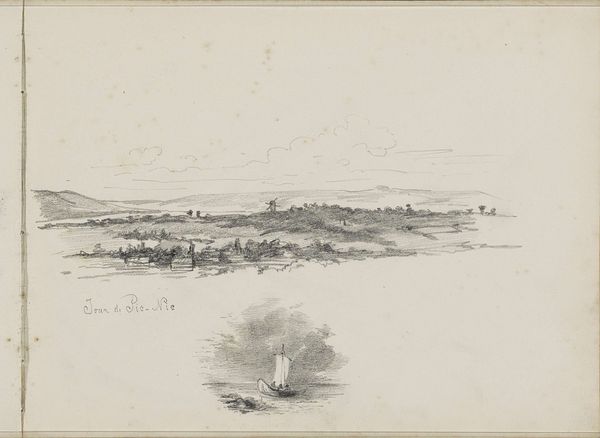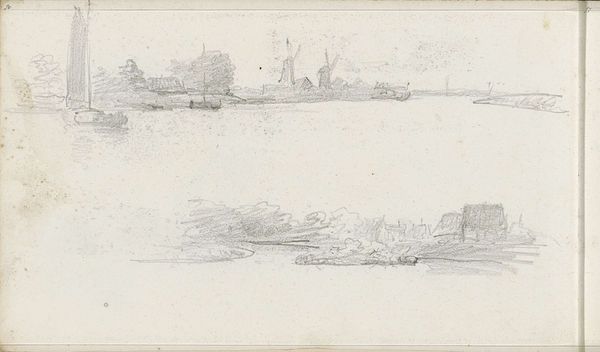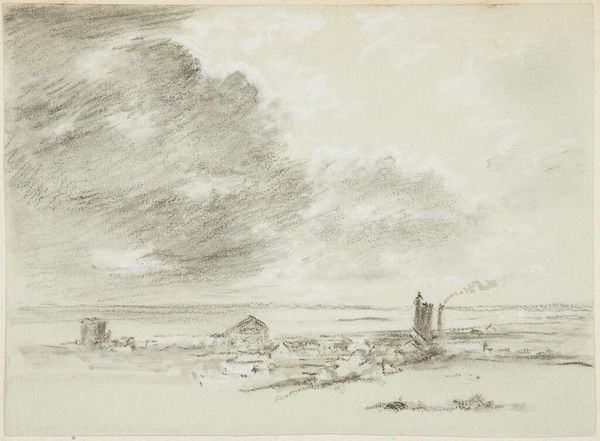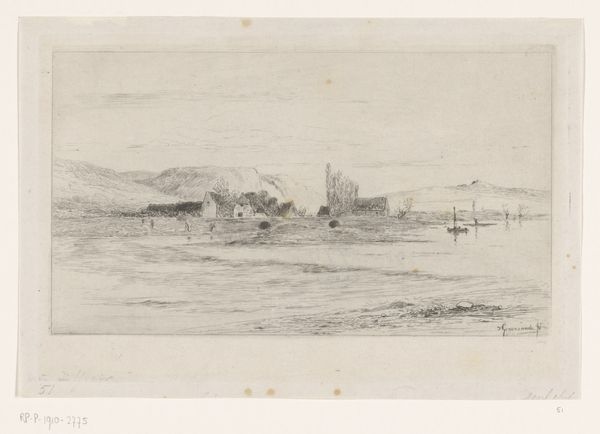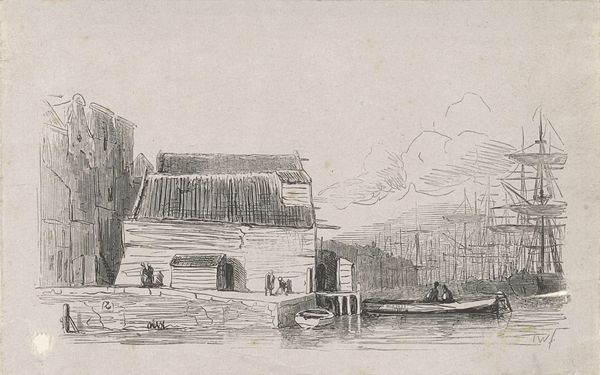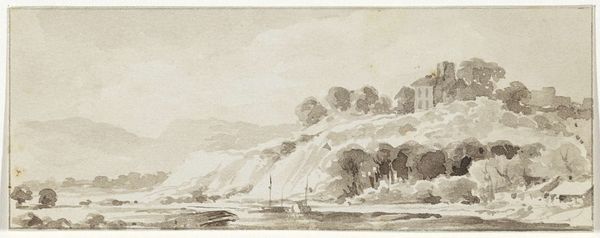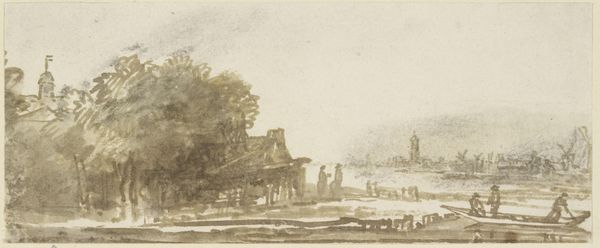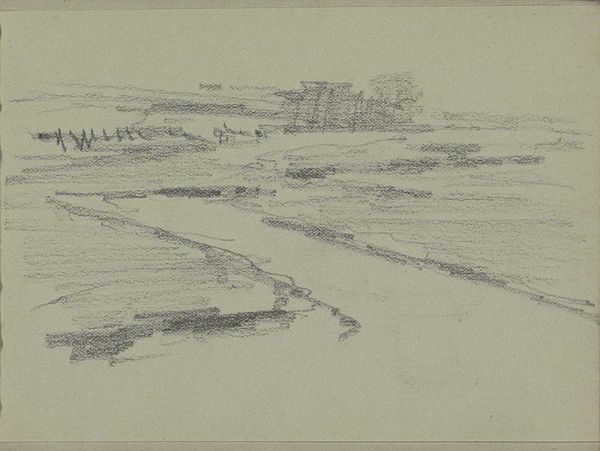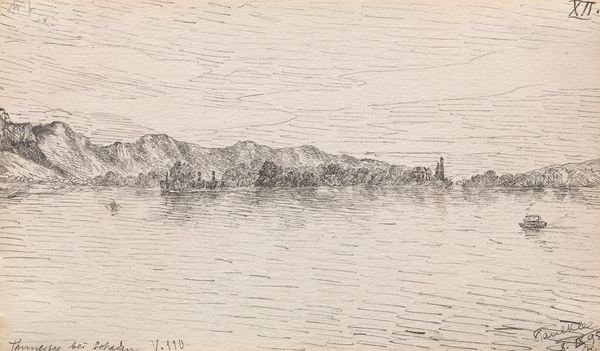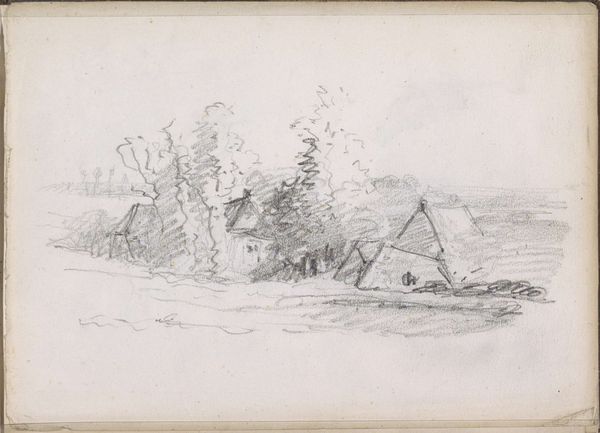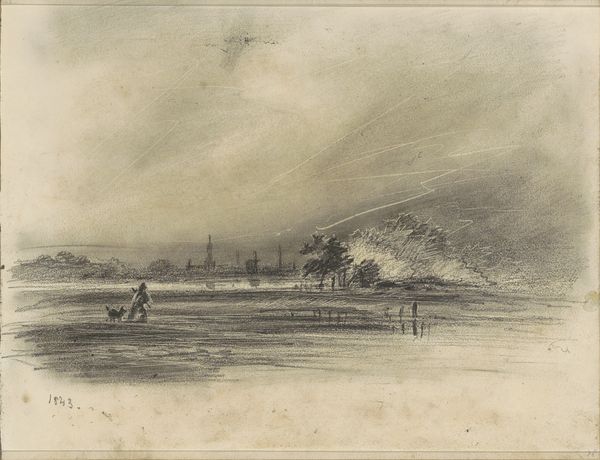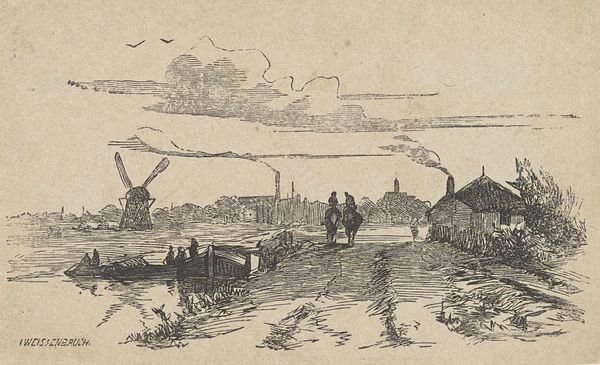
drawing, pencil
#
pencil drawn
#
drawing
#
16_19th-century
#
landscape
#
pencil drawing
#
pencil
#
realism
Copyright: Public Domain: Artvee
Editor: So, this is "Beach at Low Tide, Cullercoats, England," a pencil drawing by Winslow Homer from 1881. It's interesting how muted and hazy the scene is, almost dreamlike. What do you see in this piece, considering the composition and use of the medium? Curator: Initially, the distribution of tonal values catches my eye. The subtle gradations of gray, achieved with pencil, articulate space and light. Notice how the foreground reflections provide a flattened, almost abstract plane against which the figures are placed. The high horizon line, a band of layered dark and light tones, compresses the depth, focusing our attention on the surface dynamics of the scene. The very limited range of tonality here is itself a compelling statement about the quiet austerity of the location. What is your reaction to this limitation of tonal range? Editor: It emphasizes the quiet mood, I think. It makes it less about individual people and objects, and more about a general feeling. But why choose to capture a coastal scene with a drawing instead of a painting? Curator: Indeed, the atmospheric quality is carefully built, tone by tone, which lends the composition a striking harmony, where formal elements reinforce the sense of contemplative observation. The medium itself also contributes to our understanding of its structural and conceptual relationships. Note how Homer employs the graphic qualities of the pencil to outline objects and add expressive value to his forms. The grainy texture adds to the scene's overall tonal integration. This careful handling allows a direct observation of a transient atmospheric condition to become something permanent and beautiful in itself. Editor: I hadn't thought about how the medium adds so much to the mood. The soft, hazy quality wouldn't be the same in a sharper medium like ink or paint. Thanks for your insight! Curator: The power of art is sometimes hidden within deceptively simple elements, isn't it? Looking closely at tone, texture and medium reveals deeper complexities and conceptual intent.
Comments
No comments
Be the first to comment and join the conversation on the ultimate creative platform.
